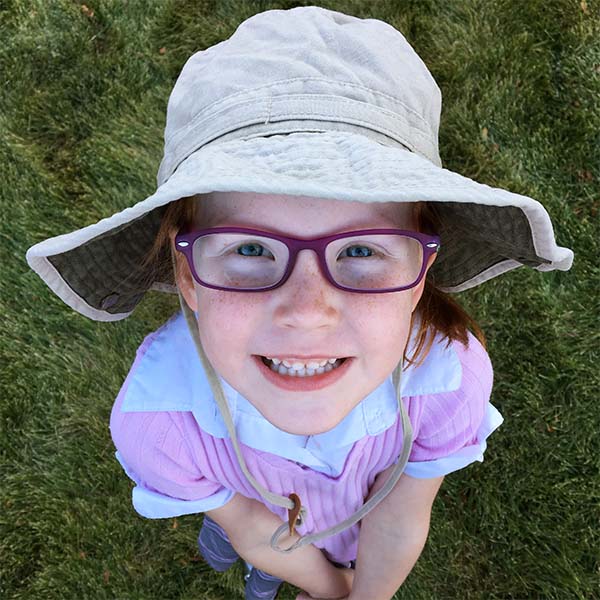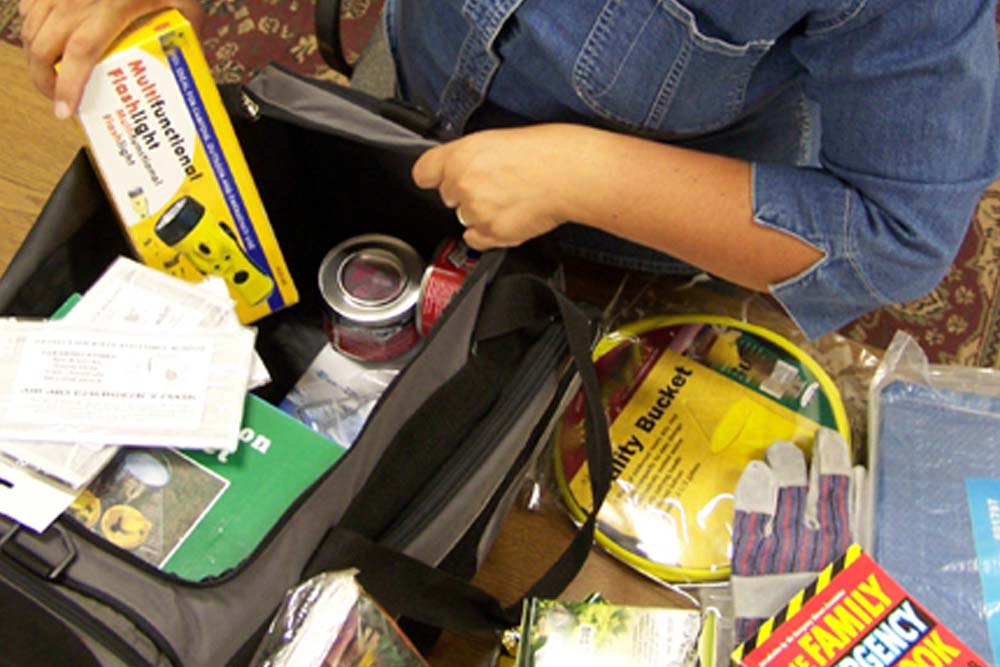Disaster Supply Kit: Shelter, Clothing, and Fire
THE POINT
DO THIS
- Learn different shelter, clothing, and fire options that can go in an emergency kit.
- Determine what works best for you and your family.
- Put those in your emergency kits.
- Rotate as necessary.
Disaster Supply Kit Shelter, Clothing, and Fire
 A big part of maintaining normal body temperature is staying dry. A waterproof poncho is small enough to easily fit in a pocket in your disaster supply kit, but be quickly accessed if the weather turns bad. There isn't any insulation, but it keeps the moisture out of your clothing. In a pinch, an upside down garbage bag can be turned into poncho. Just cut a hole big enough for your head and two more for your arms.
A big part of maintaining normal body temperature is staying dry. A waterproof poncho is small enough to easily fit in a pocket in your disaster supply kit, but be quickly accessed if the weather turns bad. There isn't any insulation, but it keeps the moisture out of your clothing. In a pinch, an upside down garbage bag can be turned into poncho. Just cut a hole big enough for your head and two more for your arms.

An emergency reflective blanket, commonly called a Mylar blanket can also help maintain your body temperature. Like a poncho, these plastic sheets can protect you from outside moisture, but they are also sprayed with an aluminum coating that, when used properly, can reflect 90% of your body's heat back to you. To use, make sure there is a layer of clothing or an insulative blanket between your skin and the reflective blanket. If the reflective blanket is in direct contact with your skin, it will actually conduct heat away from your body. For this reason, we suggest also including a wool or fleece blanket or sleeping bag in your disaster supply kit. Use it as insulation to hold your body heat in, but also to insulate yourself from the reflective blanket. Take note: reflective blankets ARE NOT FIRE BLANKETS! They are not designed to nor will they protect you from fire.
A backpacking tent or a tarp can protect you and your family from wind, rain, snow, and even too much direct sunlight. A tent is nice, but even a small tent can take up a lot of room in your disaster supply kit. share the different pieces of the tent in different family members' kits, the largest and heaviest pieces in the strongest members. To save room, instead of using a tent, learn how to make a shelter from a tarp. Survival books can also teach you haw to create life-saving shelters out of the resources around you.
Clothing needs to be checked every six months to be sure it still fits and is season appropriate. It is a good idea, no matter the season to have long sleeves and long pants for protection from the sun, bugs, scrapes, and from the cold. If you'd like, in spring time, change to lighter summer clothing. In fall, change to heavier and warmer winter clothing. Keep a light to medium weight fleece pullover in your kit year round because even summer nights can get cold. Know how to dress in layers to maintain your body temperature no matter what conditions you may be in. Even if you have clothing that will work for year round, it is a good idea to check it yearly. All to often, children and adults have outgrown the clothing in their emergency kits and have nothing to wear in an emergency situation. Be sure to add an extra pair of wool or synthetic fiber socks and underclothing. It is recommended not to use cotton since cotton material holds moisture next to your skin, causing your body temperature to drop.
 Have a hat with a brim and/or a bandana to protect your face from wind and the sun. This is important in hot and cold temperatures. Sunburnt and wind chapped skin cannot regulate your body temperature very well, plus it's just uncomfortable. Protect your face by keeping it covered.
Have a hat with a brim and/or a bandana to protect your face from wind and the sun. This is important in hot and cold temperatures. Sunburnt and wind chapped skin cannot regulate your body temperature very well, plus it's just uncomfortable. Protect your face by keeping it covered.
 Hand and body warmers are small and easy to stick in an emergency kit pocket. They can provide heat for around eight hours. Chemical hand warmers work by rapid oxidization when the contents of the packets are exposed to oxygen in the air. That's why you need to leave them in the plastic packaging until you are ready to use them. Hand warmers do have an average shelf-life of about one year, so check the printed expiration dates and rotate as often as is needed.
Hand and body warmers are small and easy to stick in an emergency kit pocket. They can provide heat for around eight hours. Chemical hand warmers work by rapid oxidization when the contents of the packets are exposed to oxygen in the air. That's why you need to leave them in the plastic packaging until you are ready to use them. Hand warmers do have an average shelf-life of about one year, so check the printed expiration dates and rotate as often as is needed.
Having a means of starting a fire is an important part of your disaster supply kit. Learn and practice how to safely build and put out a small fire. Include windproof/waterproof matches and know that often times, waterproof matches must be struck on the box they came in. Keep the box dry because even though the matches are waterproof, the box with the striker is not. These are NOT strike anywhere matches. If you want to include strike anywhere matches in your kit, first dip the matchhead in melted candle wax and let it cool. This will waterproof the match. Then to use it, scrape off some of the wax to expose the matchhead, then strike it ... anywhere. Store all matches, waterproof or not, in a waterproof container.
Beyond matches, include other alternative fire starters in your emergency kit. This could include things like a lighter, magnesium rod and striker, a magnifying or Fresnel lens, or a number of other things. Make sure you know how to use the item and have good practice with it in creating a fire before adding it to your disaster supply kit. Be sure to add a small amount of dry tinder or other fire starting material as well.
Shelter, Clothing & Fire
Click Here

Cold Weather Clothing Layers
We've always been told to wear multiple layers instead of one bulky layer when going out in the cold, but how can we do it most effectively?
Learn about the BASE layer, the INSULATION layers, and the OUTSIDE PROTECTIVE layer.
Click Here

Safely Build a Fire
Click Here

Get a Kit: Family
Click Here

